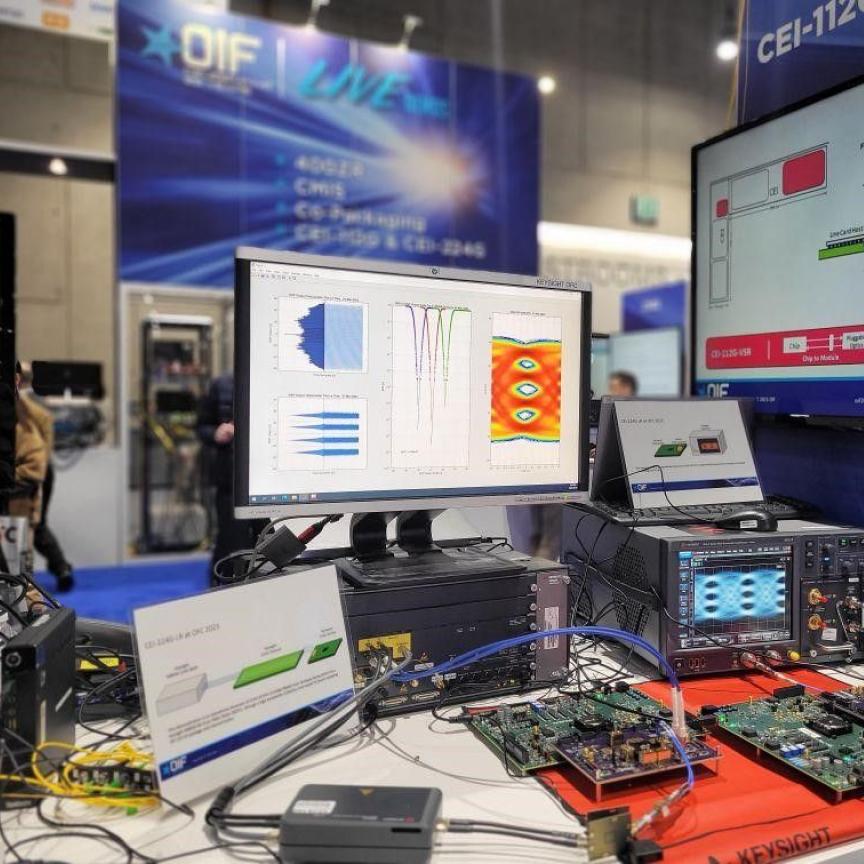NeoPhotonics has completed experimental verification of the transmission of 400Gb/s data over data centre interconnect (DCI) ZR distances in a 75GHz spaced dense wavelength division multiplexing (DWDM) channel.
The company achieved data-rate-per-channel increases from today’s non-interoperable 100Gb/s direct-detect transceivers to 400Gb/s interoperable coherent 400ZR modules. In addition, the current DWDM infrastructure can be increased from 32 channels of 100GHz-spaced DWDM signals to 64 channels of 75GHz-spaced DWDM signals. This means that the total DCI fibre capacity can be increased from 3.2 to 25.6Tb/s, a total capacity increase of 800 per cent.
The components and subsystems developer demonstrated end-to-end 90km DCI links using three in-house 400ZR pluggable transceivers with their tunable laser frequencies tuned to 75GHz spaced channels, and a pair of passive 75GHz-spaced DWDM MUX and DMUX modules designed specifically for this application. The optical signal-to-noise ratio (OSNR) penalty due to the presence of the MUX and DMUX and the worst-case frequency drifts of the lasers, as well as the MUX and DMUX filters, is less than 1dB. The worst-case component frequency drifts were applied to emulate the operating conditions for aging and extreme temperatures.
The technology used demonstrated that it can overcome a number of challenges associated with transporting 400ZR signals in 75GHz-spaced DWDM channels. The 400ZR signal uses an approximately 60GBd symbol rate and 16 QAM modulation, resulting in a broader transmitting signal spectrum compared with that of a standard 100Gb/s coherent or PAM4 signals. It is also recognised that the centre frequencies of the lasers, MUX and DMUX will all drift due to temperature changes and aging. Consequently, as the channel spacing is reduced from 100GHz to 75GHz, adjacent channel interference (ACI) becomes more critical, and can potentially degrade the optical signal-to-noise ratio of 400ZR signals.
The filters used in the MUX and DMUX units are designed to limit ACI, while having a stable centre frequency against extreme temperatures and aging. The optical signal spectrum of the pluggable 400ZR transmitter should not be too wide, to avoid ‘spillover energy’ impacting its neighbor DWDM channels. It also cannot be too narrow, as that would degrade the signal quality or even recoverability, especially after the MUX and DMUX filtering.
Tim Jenks, chairman and CEO of NeoPhotonics said: ‘The combination of compact 400ZR silicon photonics-based pluggable coherent transceiver modules with specially designed 75GHz channel spaced multiplexers and de-multiplexers can greatly increase the bandwidth capacity of optical fibers in a DCI application and consequently greatly decrease the cost per bit. These 400ZR coherent techniques pack 400Gb/s of data into a 75GHz wide spectral channel, placing stringent requirements on the multiplexers and de-multiplexers.’


